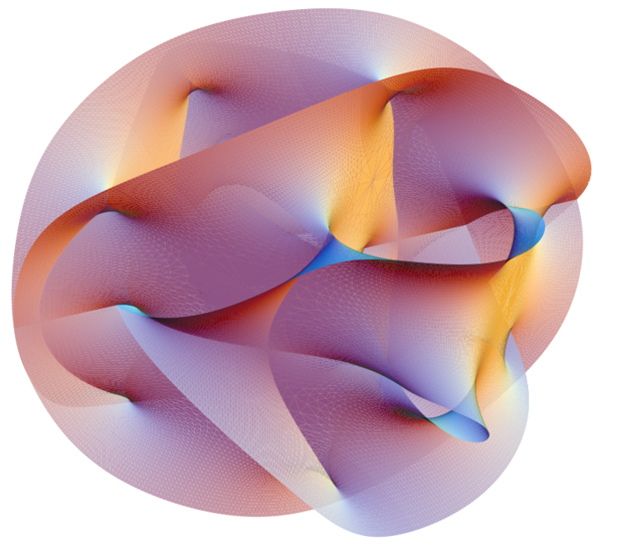Exploring new tools in string theory
By Paul Sutter 8 hours ago
Breaking down the AdS/CFT correspondence. Like, what IS it?

Visualization of a Calabi-Yau manifold, a structure representing the 6 dimensions of space-time that are curled up, according to string theory.
(Image: © Creative Commons | Lunch)
String theorists are shifting focus to solve some rather sticky problems in physics.
Over the past few years, string theory has been less about trying to find a unifying description of all forces and matter in the universe, and more about exploring the AdS/CFT correspondence, a potential link between the tools and methods developed in the string community and some strange physics problems.
While it doesn't have a particularly catchy name, the AdS/CFT correspondence, it is a potentially powerful (but so for unproven) tool to solve complex riddles.
Space is supported by its audience. When you purchase through links on our site, we may earn an affiliate commission. Learn more
Expert Voices
Home News Science & Astronomy
Exploring new tools in string theory
By Paul Sutter 8 hours ago
Breaking down the AdS/CFT correspondence. Like, what IS it?
Comments (1)
Visualization of a Calabi-Yau manifold, a structure representing the 6 dimensions of space-time that are curled up, according to string theory.
Visualization of a Calabi-Yau manifold, a structure representing the 6 dimensions of space-time that are curled up, according to string theory.
(Image: © Creative Commons | Lunch)
String theorists are shifting focus to solve some rather sticky problems in physics.
Over the past few years, string theory has been less about trying to find a unifying description of all forces and matter in the universe, and more about exploring the AdS/CFT correspondence, a potential link between the tools and methods developed in the string community and some strange physics problems.
ADVERTISING
While it doesn't have a particularly catchy name, the AdS/CFT correspondence, it is a potentially powerful (but so for unproven) tool to solve complex riddles.
A universe unlike ours
The "AdS" in the AdS/CFT correspondence stands for "anti-de Sitter," which doesn't explain much at first glance. The name was inspired by Willem de Sitter, a physicist and mathematician who played around with Einstein's theory of general relativity shortly after it was published in 1917. De Sitter experimented with the idea of different kinds of theoretical universes, filling them up with various substances and figuring out how they would evolve.
More:
https://www.space.com/string-theory-ads-cft-correspondence.html
